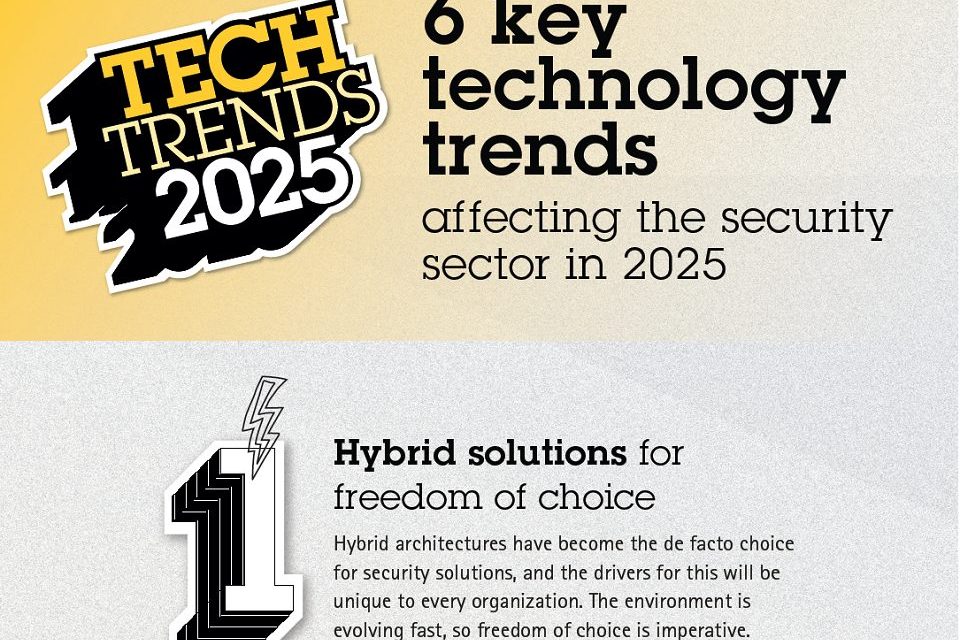Axis Communications highlights 6 technology trends that will influence the security sector in 2025

Some of these trends are developments from previous years. An obvious example is the continued interest in how artificial intelligence will be applied in the security sector, and Axis highlights some of the new aspects that will need to be addressed in the future. Others are new or even a return to topics that have not been explored for some time.
National and regional regulatory authorities will once again try to keep up with technological innovations. AI, cybersecurity, privacy, the need to ensure the resilience of critical entities, all these aspects will be the subject of proposals and new regulations. For Axis customers, this approach means improved capabilities, more flexibility, greater efficiency and increased value.
Find the infographic resuming the trends below. More details on the trends here: Axis Communications prezintă 6 tendințe tehnologice care vor influența sectorul securității în 2025 | Axis Communications

1. Hybrid solutions: freedom of choice
Hybrid architectures, combining edge, cloud and on-premise technologies, are becoming standard in security solutions. Each organization will choose the architecture that best meets its needs, taking into account technological, legal and governance concerns. These solutions allow flexibility in data storage and management, providing optimal system scalability.
2. The Evolution of AI and Its Efficiency
Artificial intelligence continues to advance, with significant applications in object recognition and video analytics. Generative AI models are increasingly usable, but require high processing power. AI technologies will help improve the efficiency of security operations, enabling the identification of anomalies and prompt reactions to events. AI will also support a hybrid approach to technology architectures.
3. Extended Safety and Security
Advanced video, audio, and access control technologies are expanding beyond traditional security purposes. Data collected by environmental sensors can be used to improve operational efficiency and business analysis, and hybrid technologies facilitate collaboration between different departments of organizations for better use of data.
4. The “Renaissance” of Image Quality
Image quality is becoming an important trend, not only in terms of resolution, but also in the way images are processed. High-quality cameras allow for greater coverage with fewer devices and improve analytics, especially in crowded environments. AI analytics can automatically alert operators to improve response efficiency.
5. Long-term software support for hardware
While quality hardware may have a long lifespan, its long-term value depends on ongoing software support. Software support allows for the expansion of device functionality and security, leading to a more efficient and cost-effective solution in the long term. This underscores the importance of lower total cost of ownership through software updates.
6. Technological autonomy for the benefit of the customer
Suppliers who have control over fundamental technologies are in an ideal position to offer customized and secure solutions. Control over key technologies, from hardware to software, allows for the development of products that better meet customer needs. In addition, this control helps reduce the risks associated with disruptions to global supply chains. So, these are Axis’ trends regarding the directions that will shape the security sector in 2025, with a focus on flexibility, efficiency, and autonomy.














